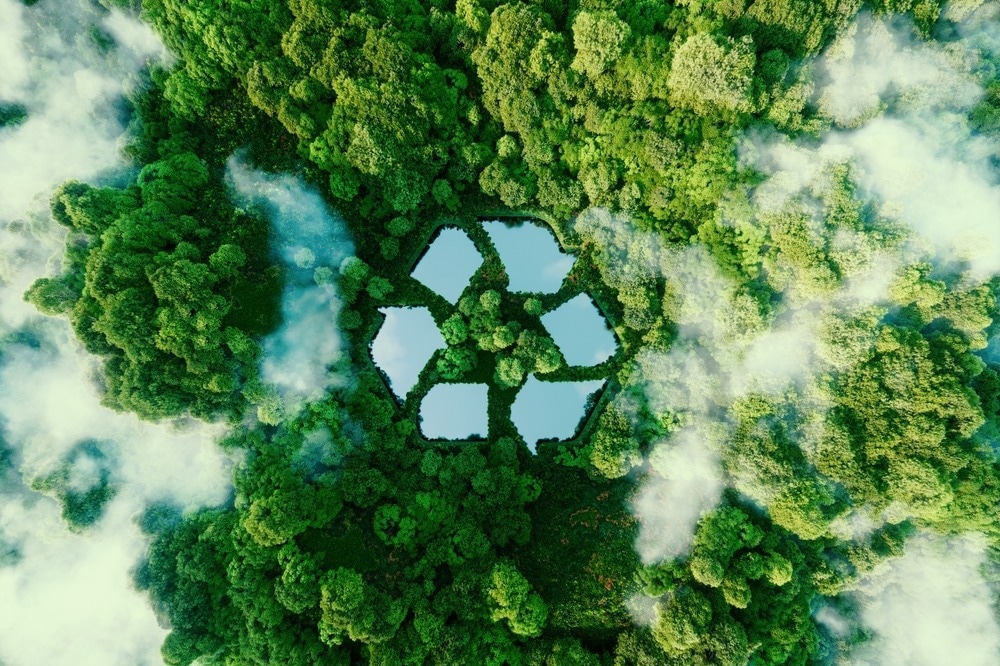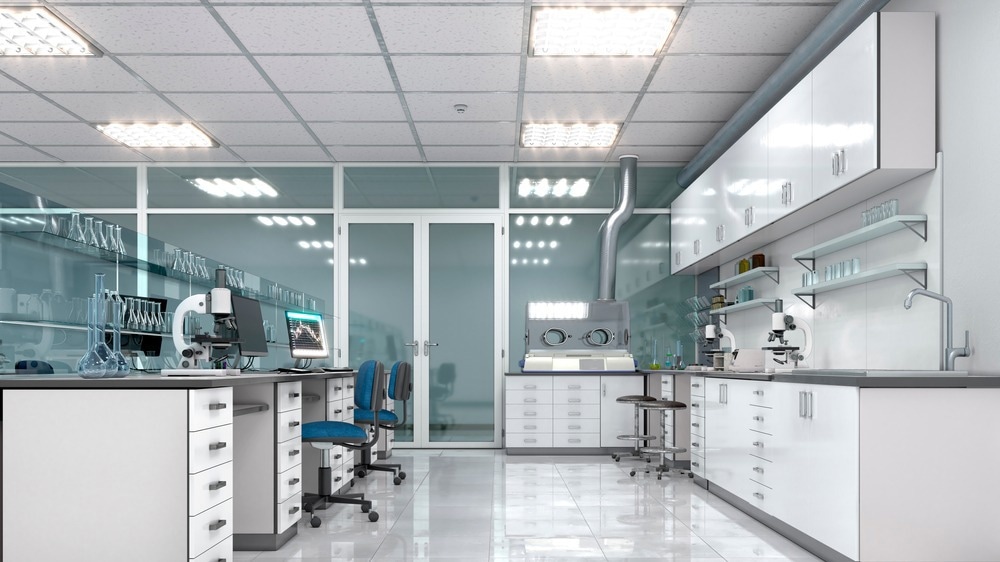Even though research labs analyze the ecosystem and formulate strategies to maintain them, lab work generates an incredible amount of waste and consumes significant energy and water. According to a recent estimate, labs produce around 5.5 million tons of plastic waste every year. They utilize ten times more electricity and four times more water compared to office spaces of the same size. Considering how these pollutants affect the environment, many research labs worldwide have decided to go green.

Image Credit: petrmalinak/Shutterstock.com
How to Make Labs Eco-Friendly?
Due to the need for sterility, most microbiology labs use hundreds of single-use plastic tubes, such as Falcon tubes, for yeast culture. In addition, academic research facilities use a significantly higher amount of energy than any commercial building, mostly due to ventilation systems and refrigeration.
The utilization of single-use plastic pipette tips and ultracold freezers is necessary for specific experiments. However, for other experiments, minor changes in the experimental setups could reduce waste generation or energy/water consumption. Some of the changes that could make a lab eco-friendly are discussed below:
Reduction in Energy Consumption
One of the simple steps is to switch off all devices, including computers, when they are not in use. Instruments with heating and cooling elements could be connected to socket timers. Setting the socket timer will ensure that the instrument is ready to use when needed without unnecessary overuse. In addition, if the lights are not equipped with motion sensors, they must be switched off when not required.
Poorly maintained equipment consumes more energy and has shorter longevity. Ultra-low temperature freezers (ULFs) consume high energy and must be used efficiently. It is prudent to have one fully filled ULF running rather than two half-filled. ULF spaces must be organized such that more samples can be stored. Proper placement, such as placing it away from a vent or direct sunlight, and appropriate maintenance reduces ULF's energy consumption.
Reduction in Lab Waste
Most labs encounter an incredible about of plastic waste, which could be reduced through proper reuse, reduction, and recycling of waste. It is important to plan an experiment, keeping in mind its environmental impact. It is important to replace hazardous chemicals with less harmful alternatives.
It is important not to produce more waste than what can be recycled. For instance, replacing plastic labware with glassware and wiping ice or water spills with a cloth instead of paper towels are simple initiatives that can reduce waste volumes. Avoidance of small individual orders could also reduce packaging waste and shipping emissions. It is important not to order more chemicals and reagents than needed, as they may expire. Collaborating with other labs to share chemicals and equipment also reduces waste generation.
Although the recycling option is different in every country, it is important to recycle waste whenever possible. Some labs produce thousands of liters of solvents (e.g., acetone, ethanol, and xylene) from glass washing, which are disposed of. Instead, these solvents could be reused by setting up a benchtop fractional distillation recycling system.

Image Credit: urfin/Shutterstock.com
Reduce Water Use
Many small changes could reduce water usage in labs. For instance, utilizing an electrically powered vacuum aspiration system while aspirating biological liquid waste instead of connecting a vacuum flask to a water-jet pump would save a significant amount of water. Furthermore, this system is a safer option for collecting biological liquid waste.
The lab faucets equipped with low-flow aerators also reduce water wastage. Small changes, such as covering the water bath while in use and running the dishwasher and autoclave only when they are full, reduce water usage. Extra care must be taken while using pure water because the production of one unit of deionized water needs three units of water.
Academic Research Lab Initiatives to Become Eco-Friendly
Many research facilities are implementing better waste-management practices and are seeking greener options. For instance, the University College London aimed to stop using single-use plastics by 2024 and be carbon-neutral by 2030. A junior researcher at the Indian Institute of Science in Bengaluru has significantly reduced plastic usage by switching to glass Petri dishes to grow microbes. This change has reduced waste generation from a large bag to a few grams, reduced plastic waste, and enabled their funding to go further.
A researcher at the Massachusetts Institute of Technology (MIT) observed that the sash window on the fume cupboard where many chemicals are stored was frequently left open. This led to energy wastage as it kept the ventilation running. After receiving the MIT Green Labs sponsorship, he and his team developed a simple sensor that alerts users if a sash is left open. They named this sensor the motion and sash height (MASH) alarm.
The same team at MIT set up a Lab Energy Assessment Center (LEAC) to assess labs and provide them with energy-saving recommendations. The LEAC team estimated that one MIT lab typically spends approximately $30,000 on electricity and releases 163 tonnes of carbon dioxide (CO2) annually. This could be reduced by modifying some lab systems, such as replacing overhead lights with LED bulbs and elevating the freezer temperature from −80 to −70 °C. These simple modifications could lead to a decrease in energy usage by around 8% and CO2 emissions by 13 tonnes. In addition, the lab could save up to $2,500 in energy bills annually.
The program manager for the green lab scheme at the University of Colorado Boulder stated that sharing equipment promotes the development of an eco-friendly lab setting. This initiative not only conserves research dollars, but users can share their expertise to make the most of various instruments. It has been observed that shared instruments are better maintained than equipment in an individual lab.
Sources:
- Durgan, J. et al. (2023)Green Labs: a guide to developing sustainable science in your organization. Immunology and Cell Biology. 101(4), pp. 289-301.
- Szczesna, K. (2023)13 tips how to be more eco-friendly in the lab. [Online] Available at: https://www.ptglab.com/news/blog/13-tips-how-to-be-more-eco-friendly-in-the-lab/
- Fekonja, A. (2021) 5 ways to make your laboratory more sustainable in 2022. [Online] Available at: https://biosistemika.com/blog/5-ways-to-make-your-laboratory-more-sustainable-in-2022/
- Werner, A. (2021) Lab sustainability – simple tips to become a greener lab. [Online] Available at: https://www.integra-biosciences.com/united-kingdom/en/blog/article/lab-sustainability-simple-tips-become-greener-lab
- Madhusoodanan, J. (2020) Diy Approaches to Sustainable Science. Nature, 581.
- Lab Innovations 2019: Sustainability in the lab.Science Council. (2019) [Online] Available at: https://sciencecouncil.org/sustainability-in-the-lab-lab-innovations-2019/?utm_source=google&utm_medium=cpc&utm_campaign=BG_ScienceCouncil&gclid=CjwKCAjwitShBhA6EiwAq3RqA8ky5oFfABmMAeF2x2uMfKiafqhlLlwxZ361Yqb1UmxYAkV47ht9KxoC0YwQAvD_BwE
- Urbina, M. et al. (2015). Labs should cut plastic waste too. Nature, 528(479). https://doi.org/10.1038/528479c
Last Updated: May 3, 2023